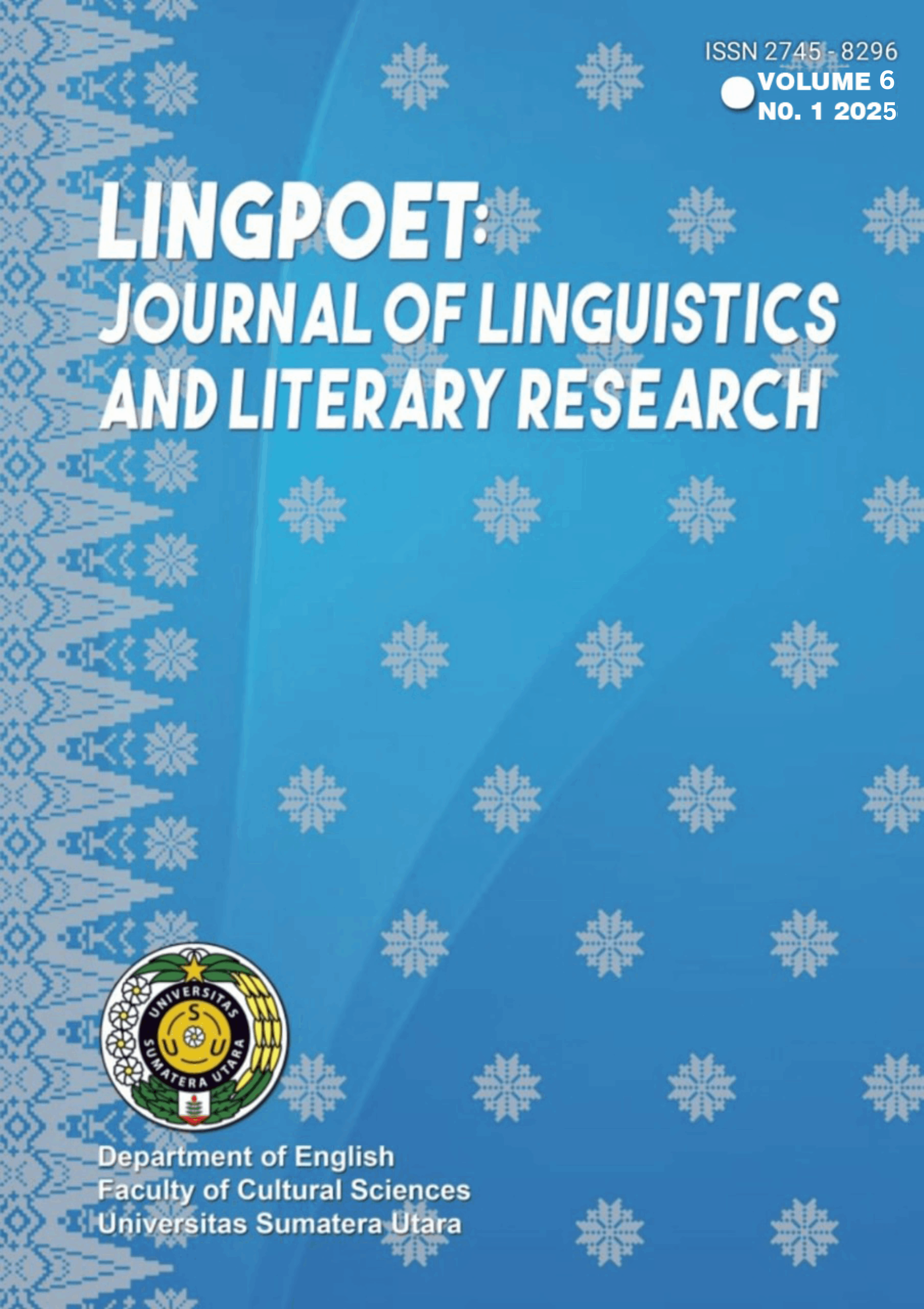Intercultural Communication of Political Issues on Twitter Platform: Cyber Discourse Analysis
DOI:
https://doi.org/10.32734/lingpoet.v6i1.19316Keywords:
Hall; low high context; Twitter; CDAAbstract
This study aims to identify how high-context and low-context communication is represented in Twitter posts and to analyze the differences in communication styles between the two countries, particularly in the context of high-context and low-context communication using Edward Hall’s theory. The method in this research is qualitative design with the data are three tweets related about #KawalPutusanMK and about new American presidential election. The result in this research highlights cultural differences in tweets, with Indonesians using indirect, context-dependent language reflecting collectivism, while Americans favor direct, explicit communication reflecting individualism. These patterns underscore the need to understand cultural values to enhance cross-cultural online interactions.
Downloads
References
Acar, A., & Deguchi, A. (2013). Culture and Social Media Usage: Analysis of Japanese Twitter Users. International Journal of Electronic Commerce Studies, 4, 21–32.
Alizadeh Afrouzi, O. (2021). Humanitarian behavior across high-/low-context cultures: A comparative analysis between Switzerland and Colombia. Journal of International Humanitarian Action, 6(1), 2. https://doi.org/10.1186/s41018-020-00088-y
Al-Khatib, M. A. (2021). (Im) politeness in intercultural email communication between people of different cultural backgrounds: A case study of Jordan and the USA. Journal of Intercultural Communication Research, 50(4), 409–430.
Argyle, M. (1982). Intercultural communication. Cultures in Contact: Studies in Cross-Cultural Interaction, 61–80.
Arifin, F., Wigati, F., & Lestari, Z. (2013). Typical Responses in Giving Evaluation: An Analysis of High and Low Context Culture Communication. PAROLE: Journal of Linguistics and Education, 3(1 April), 85-92.
Barker, V., & Ota, H. (2011). Mixi diary versus Facebook photos: Social networking site use among Japanese and Caucasian American females. Journal of Intercultural Communication Research, 40(1), 39–63.
Bilbao-Jayo, A., & Almeida, A. (2021). Improving Political Discourse Analysis on Twitter With Context Analysis. IEEE Access, 9, 104846–104863. https://doi.org/10.1109/ACCESS.2021.3099093
Casero-Ripollés, A. (2018). Research on Political Information and Social Media: Key Points and Challenges for The Future. El Profesional de La Información, 27(5), 1699–2407.
Chadwick, A. (2017). The Hybrid Media System: Politics and Power (2a ed.). Oxford University Press.
Creswell, J. W. (2014). RESEARCH DESIGN: Qualitative, Quantitative, and Mixed Methods Aproaches, Fourth Edi (4th ed.). SAGE Publication. 53 LingPoet Vol.6, No.1 (2025) 44–53
Hall, E. T. (1976). Beyond Culture. Anchor Press/Double day.
Hall, E. T., & Hall, M. R. (1990). Understanding cultural differences: Germans, French and Americans. Intercultural Press.
Mahmud, T. (2024). Reflections of high- and low-context marketing communication styles in Youtube video ads: A comparative study of FMCG companies in Finland and India. OSUVA.
Park, J., Baek, Y. M., & Cha. (2014). Cross-cultural comparison of nonverbal cues in emoticons on Twitter: Evidence from big data analysis. Journal of Communication, 64, 333–354.
Samovar, L. A., Porter, R. E., & Jain, N. (1981). Understanding Intercultural Communication. Wadsworth.
Saputri, M. E., & Saraswati, G. T. (2017). High-Low Context Communication in Busisness Communication of Indonesian. Proceedings of the 3rd International Conference on Transformation in Communications 2017 (IcoTiC 2017). http://creativecommons.org/licenses/by-nc/4.0/
Ting-Toomey, S. (1999). Communicating across cultures. Guilford Press.
Tufekci, Z. (2015). Algorithmic harms beyond Facebook and Google: Emergent challenges of computational agency. Colo. Tech. LJ, 13, 203.
Wu, D. D., & Li, C. (2018). Emotional branding on social media: A cross-cultural discourse analysis of global brands on Twitter and Weibo. Intercultural Communication in Asia: Education, Language and Values, 225–240.
Downloads
Published
How to Cite
Issue
Section
License
Copyright (c) 2025 LingPoet: Journal of Linguistics and Literary Research

This work is licensed under a Creative Commons Attribution-ShareAlike 4.0 International License.













